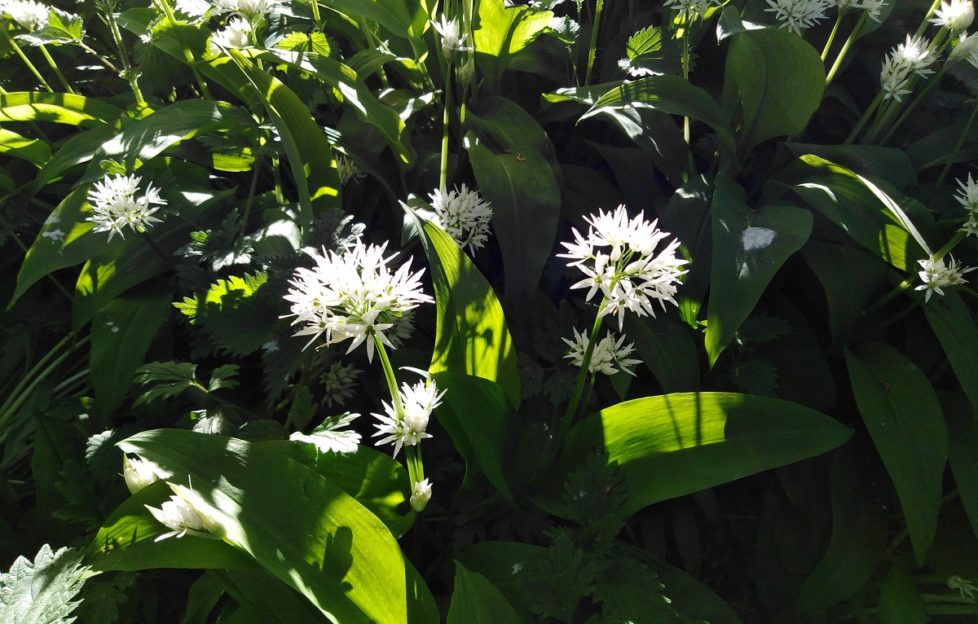
Shakespeare’s Oberon might have waxed lyrical over “a bank where the wild thyme grows” in “A Midsummer Night’s Dream”, but give me a bank where the wild garlic grows any day!
The woodlands near me are carpeted with Allium ursinum – bear’s garlic, to give it another of its many names. It is, apparently, an important food for brown bears when they emerge from hibernation. Not that you’ll find many bears, hibernating or otherwise, around here.
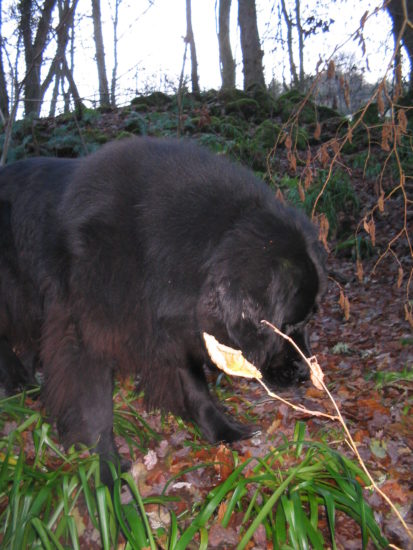
Though sometimes mistaken for a bear, our dog had little interest in wild garlic.
Most commonly known as wild garlic or ramsons, the pretty white flowers are just beginning to come out. As the plant matures, its garlic scent intensifies. In a week or so, its strength will be such that you’ll be able to smell it from miles away!
Wild garlic is pungent (eye-wateringly so at times) – especially in these quantities. And it grows in abundance around here as there are plenty of the shaded, woody areas that it loves. There’s even a wild garlic sculpture by the path to signify ramsons’ status as a local feature.
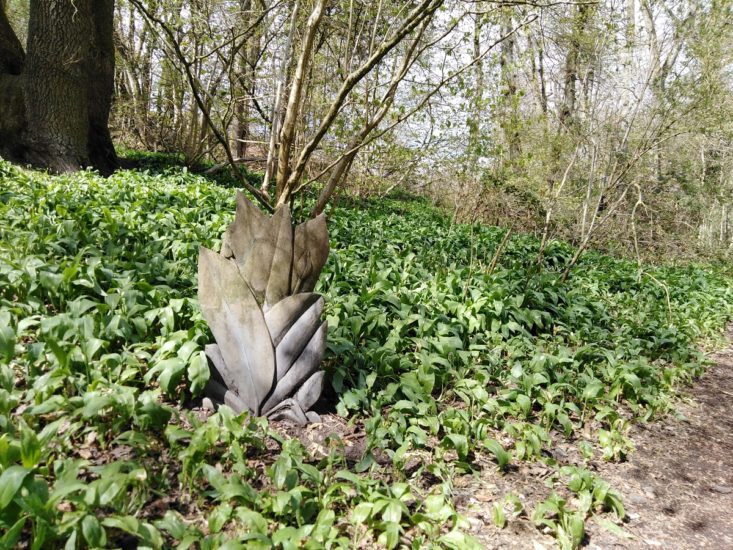
Wild garlic is something of a local feature – as this woodland landmark shows.
Foraging fare
It’s a useful plant. A member of the onion family, you can use it as you might use garlic or chives. The leaves are good in salad, soups and stews and make excellent pesto. Long cooking weakens the taste, so in hot dishes, they’re best added towards the end. The flowers and seeds are edible, too.
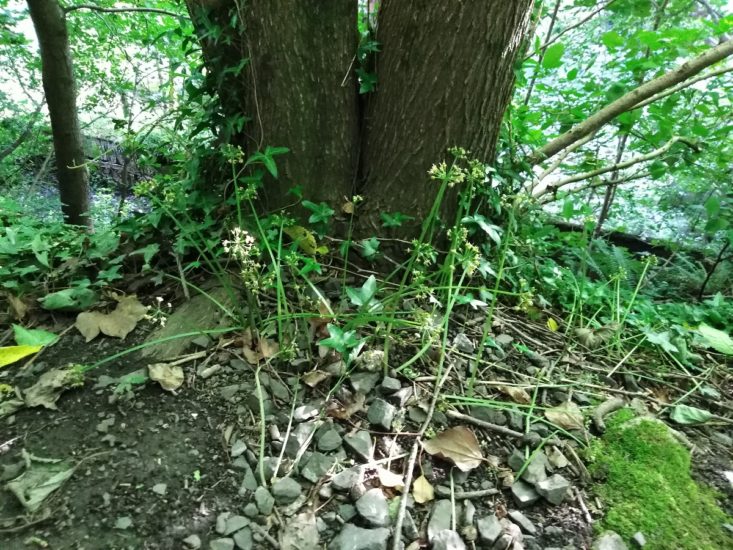
The green seeds that appear in June and July can be pickled, like capers.
However, though you can forage leaves and flowers, it is illegal to dig up the roots without the permission of the landowner. Experienced foragers also advise snipping the leaves with scissors and only taking a few of them at a time. This not only allows the plants to regenerate, but also avoids the risk of harvesting toxic plants that might be growing alongside or in between your target.
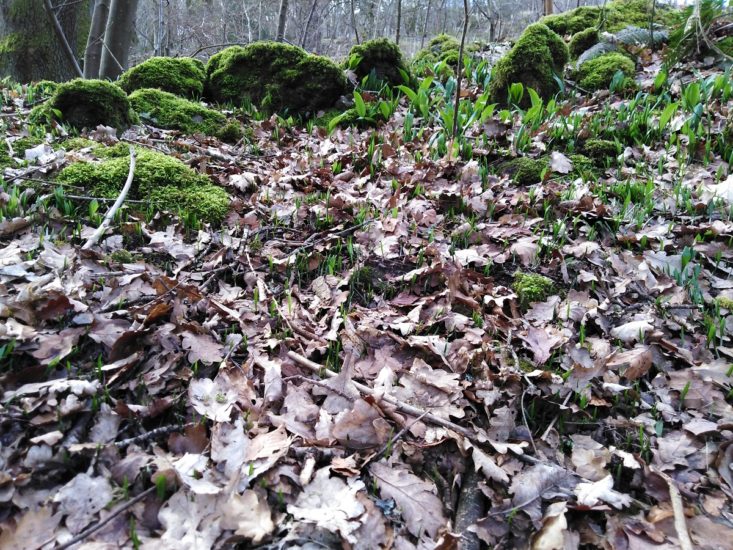
New growth starts to show in March.
Take care if you do go down to the woods today with foraging in mind; the leaves of lily of the valley resemble those of wild garlic, but are highly poisonous. Once the flowers are out, it’s easy to tell them apart, but better to go in company with an expert at first, just to be sure.
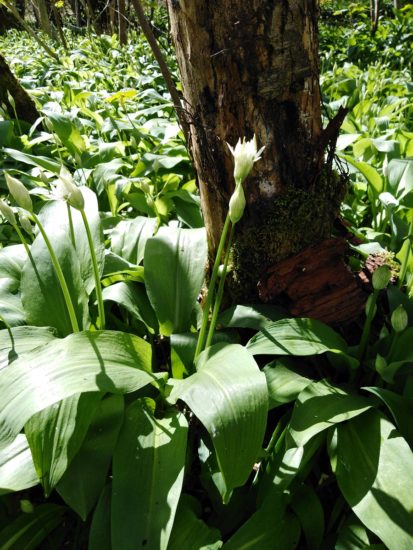
Once the flowers emerge in May,the plant is easy to identify.
I’m pretty sure I can spot the difference now, after years of walking those woodland paths, but I’m not about to experiment – I’ll just admire wild garlic in situ and enjoy the produce from forager friends who know what they’re doing!
Got A Taste For Wild Garlic?
If this has whetted your appetite, why not try our delicious recipe for Lamb With Wild Garlic And Flatbreads?




